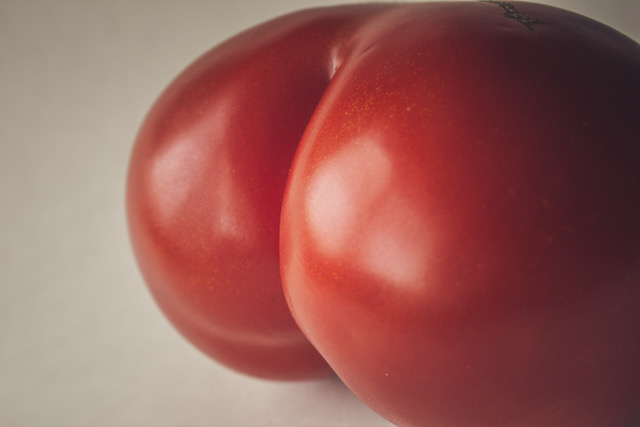By Tom Kaiser
It is both a hunger and an addiction—clicking furiously for more, wiping sweat off my fingers to scroll faster, never satisfied, but fully aroused. My pulse quickens and heart pounds through my shirt as I find the electro-lust I’ve been searching for: the glistening sheen of crème brûlée, hotly steaming pork buns, nubile little pieces of sushi and all the rest of the food porn that my chosen friends and brands are posting all over the internet.
Whoa, I think I need a minute to digest all that. How about you?
Unlike the tobacco companies in previous decades, the food industry isn’t using chemical addiction to lure its customers, however, a new study published in the Journal of Consumer Research suggests modern technology increases our collective desire to consume and we’re all losing control. Whether that’s food bloggers, friend networks or companies playing off basic human drives and weaknesses, “Networks of Desire: How Technology Increases Our Passion to Consume” likens so-called food porn with other hypnotic, addictive desires—you know, like real pornography.
The study published in JCR’s February 2017 issue used ethnography and netnography (research of human customs and social interaction in digital communications, respectively) to study online food image sharing, and critically examined “the role of technocapitalism in the realm of consumer passion.” Their findings suggest humans are tragically powerless to resist the increasingly relentless world of online delights and temptations, which are being exploited by popular food personalities and agricultural conglomerates alike.
“Networks of desire create a passionate new universe of technologically enhanced desire, one that challenges the way we think about consumer collectives, capitalism, emancipation, and posthuman consumption,” the study reports.
Noting that paintings of attractive food can be traced all the way back to the Renaissance era, Networks of Desire asserts that any previous food imagery is nothing like the current era where tech savvy consumers are bombarded with appealing pictures and videos while riding the subway, in the bathroom, while working, or when checking Facebook from the couch as dinner settles.
“Food image sharing is a grassroots and widespread activity, and our study thus includes other practices beyond the public, such as friends privately sending photos of restaurant meals, people who look at images of others’ food without ever posting, as well as lovers and family members who share virtual meals at a distance.”
According to a 2014 Virgin Mobile study, food pictures are the third most common type of images on social media feeds, behind landscape shots and selfies. Looking at my own Facebook feed, it’s a virtual bathhouse of pet pics and political rants, with a heaping order of restaurant beauty shots and how-to recipe videos.
So what’s the harm in a little food porn? In further analyzing how participation in these networks of desire—personal (Facebook, Snapchat), public (food bloggers, the “instafamous”) and professional (recipes, how-to lessons, restaurant reviews)—the study asserts that food-photo sharing tends to become an all-consuming addiction.
“The images entrance and delight you, opening your world and reacting with your body,” the study reads. “This creates a distinct tension between spending moments linked to the network versus attending to your immediate non-technological surroundings.”
Unpacking that further, the study’s authors cite food bloggers and proud consumers of food porn to analyze its impact, including gluttony and the unrestricted desire to consume.
As we humans tend to do, the extremities of such trends has resulted in phenomenon like The Spamela Anderson Burger (Google it), the Epic Meal Time series and outrageous food combinations including a towering bacon and beef burger with gummy bears and sparklers. After some related Googling, including a stop at foodporn.com, these jaded eyes have officially seen it all—and I either need a diet or a cold shower.
Networks of Desire concludes by connecting what’s happening with food imagery to greater societal trends where digital and real worlds are merging and fantasy becomes reality.
“We live in an age where sexting drives people to suicide, where augmented-reality video games instantly gain legions of followers who storm public places … where presidential candidates announce policy platforms on Twitter, and where fundamentalist-based international terrorist organizations successfully recruit using YouTube and WhatsApp,” it concludes. “In social media, extreme acts, statements, and images seem to be the quickest way to draw attention and followers.”
Against that backdrop of how powerless most of us are to increasingly intense food imagery, look for food producers, personalities, restaurants and the companies who feed off impulse purchases to get even more extreme as they tempt our taste buds.


